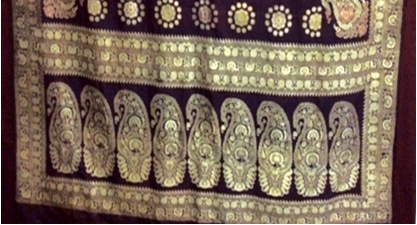
Art history/ Historiography, Museums/ Galleries / Collections / Exhibitions
Rasamandal: In Indian Textiles
Pathak, Anamika
September, 2018
The Harivansha, Gita Govinda and Vishnu, Bhavata, Bharmavaivart Purana are a few important texts which talk in detail about Krishna’s life and his spiritual teachings. These teaching were propagated through religious teachers, priests and saints in different periods in their own ways. Various stories from Krishna’s life, his lilas (his deeds/performances towards the human being) became the source of inspiration for the artists to carve, or put in paint the life stories on stone, bronze, terracotta, paper or cloth, which became the most effective way to reach the common man. Interestingly, weavers and embroiderers also followed the path of other artisans and they made a number of pichhavais, Odhanis, dusbalas, coverlets, hangings etc. which illustrate various life-scenes of lord Krishna though weaving, printing and embroidery work. Krishna in textiles is usually represented in his famous posture of Venugopal through weaving. Episodes of Krishna’s life were illustrated in Kalamkaries through printing and painted techniques. The maximum depiction of Krishna’s life scene was done through the embroidery work of different regions. The most popular motif often found in textiles is the Rasamandal or Rasa through embroideries in Himachal Pradesh and Gujarat, painting on Nathadwara picchavais, and machine made lave pichhavai. Authors have discussed sculptures, terracottas and paintings at length but Rasa on textiles attracted little attention. Rasa as a subject, as a motif is difficult in wea...



